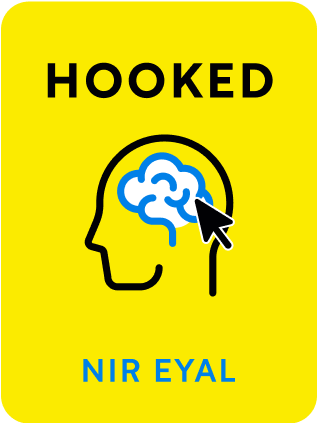

This article is an excerpt from the Shortform summary of "Hooked" by Nir Eyal and Ryan Hoover. Shortform has the world's best summaries of books you should be reading.
Like this article? Sign up for a free trial here .
What is a behavior trigger? How does an external trigger differ from an internal trigger?
External triggers come from the environment. Internal triggers come from the person’s inner life and thoughts. Both of these behavior triggers can both be used to build habits.
Read on to understand “what is a trigger?” and how an external trigger and internal trigger differ.
What Is a Trigger?
The chain reaction that starts a habit always begins with a trigger. Habits form like pearls in oysters. It starts as a tiny irritant, like a piece of sand, triggering continuous layering of coats to produce a pearl (a fully formed habit).
What Is an External Trigger?
External triggers are delivered through the environment. They contain information on what the user should do next, like app notifications prompting users to return to see a photo.
Types of external triggers include:
- Paid triggers like advertising and marketing
- Habit-forming companies tend not to rely on paid triggers since paying for reengagement is often financially unsustainable.
- Earned triggers like PR, app store placements
- Relationship triggers like word-of-mouth and social signals
- Paypal’s message about “money waiting for you” was irresistible
- Owned triggers – the user consents for the product to occupy her attention space
- App notifications on the phone, email newsletters
What Is an Internal Trigger?
Over time, as a product becomes associated with a thought, emotion, or preexisting routine, users return based on internal triggers. Emotions – especially negative ones like boredom, loneliness, confusion, lack of purpose, and indecisiveness – are powerful internal triggers. These behavior triggers may be short and minor, possibly even subconscious.
- Loneliness triggers Facebook to provide social “connection”
- Boredom prompts finding novel content on Youtube or Buzzfeed
- Lack of purpose, or the feeling that no one needs us, prompts email checking
When triggered, we often execute a mindless action to ease the negative sensation.
Create an Internal or External Trigger
Think about your user’s pain points to create the best product.
—-
- Write 3 internal triggers that could remind your user to take action with your product. Write them this way: “every time the user [internal trigger], she [first action]”
- What is the user doing right before using your product?
- Given this, what are the best places and times to send an external trigger?
- Think of 3 external triggers you could use. Then think of 3 outlandish external triggers (e.g. brain implants, electric shocks).

———End of Preview———
Like what you just read? Read the rest of the world's best summary of Nir Eyal and Ryan Hoover's "Hooked" at Shortform .
Here's what you'll find in our full Hooked summary :
- The 4 key steps that addictive tech products use to ensnare you
- Why user rewards need to be random and variable to have the strongest effect
- How to build irresistible apps yoruself






